Hol Dir den wöchentlichen SPARTANAT-Newsletter.
Dein Bonus: das gratis E-Book von SPARTANAT.
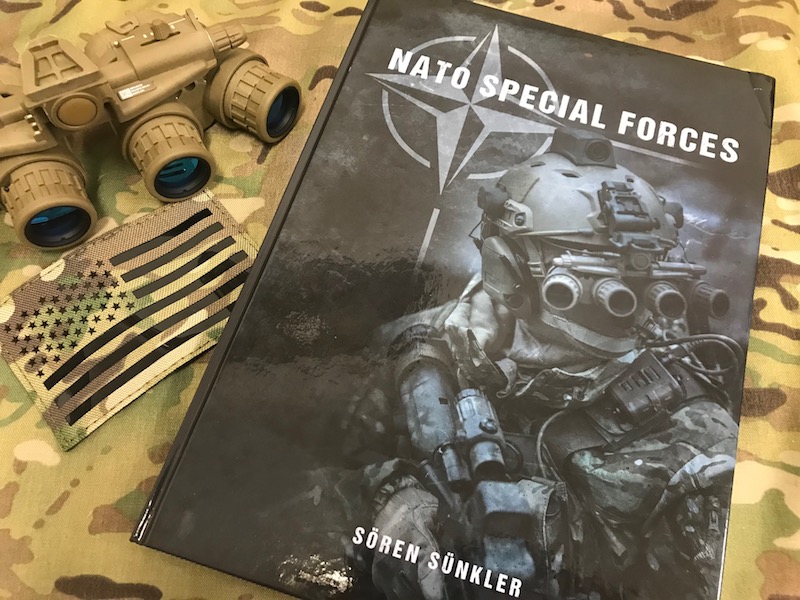
BOOKS & MORE: Die Spezialkräfte der NATO
Das Buch "NATO Special Forces" gibt einen Überblick über die NATO-Spezialeinheiten und ihre Geschichte, von den Anfängen bis zur Gegenwart. Es beleuchtet auch die aktuellen Herausforderungen und Entwicklungen, darunter die Integration von weiblichen Soldaten und Cyber-Spezialisten.
Spezialkräfte? Hätten wir auch gerne. Aber das ist nicht so leicht, wenn man kein Marvel ist. Freilich gibt es die Superhelden beim Militär. Und da erfreuen sie sich immer größerer Beliebtheit. Sie haben das beste Zeug und schauen scharf aus. Neben den regulären Einheiten, die die normale Arbeit machen, kommen die Spezialkräfte für besondere Lagen zum Einsatz. „NATO Special Forces“ heißt das neue Buch von Sören Sünkler von K-ISOM. Über die Spezialeinsatzkräfte der NATO soll es die bestmögliche Übersicht zum aktuellen Zeitpunkt bietet. Wir haben es uns für Euch angeschaut.
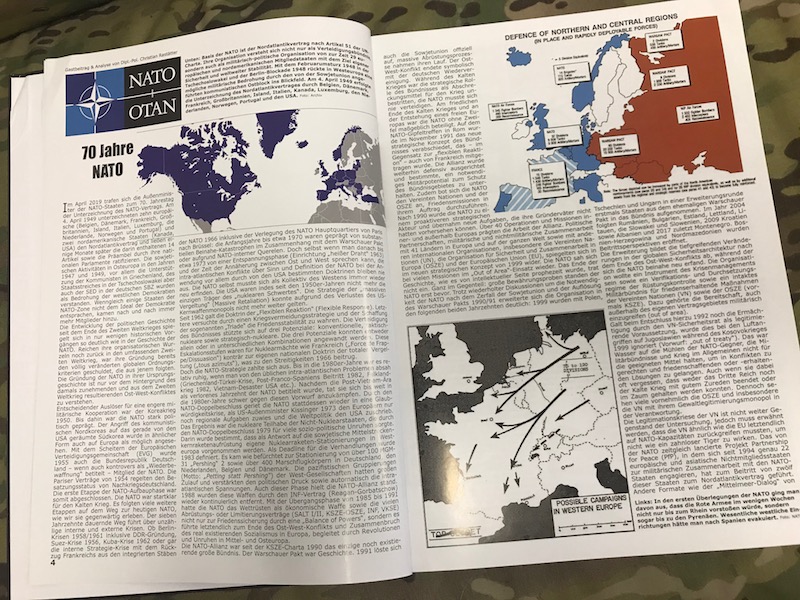 Die NATO Spezialkräfte befinden sich allerdings in einem permanenten Wandel. Die NATO ist zum Zeitpunkt der Niederschrift 70 Jahre alt geworden. Das Buch führt also auch in die Geschichte des „Dachverbandes“ ein.
Die NATO Spezialkräfte befinden sich allerdings in einem permanenten Wandel. Die NATO ist zum Zeitpunkt der Niederschrift 70 Jahre alt geworden. Das Buch führt also auch in die Geschichte des „Dachverbandes“ ein.
 Von den ersten Tagen 1949 bis heute 2019 hat sich extrem viel verändert, obwohl sehr viele Spezialeinsatzkräfte der NATO ihre Wurzeln auf den britischen SAS oder die britischen Commandos zurückführen. Eine Ausnahme stellen hier Italien und Deutschland (eigene Tradition, nicht laut sagen) sowie einige osteuropäische Länder dar. Gerade die historischen Aufnahmen in „NATO Special Forces“ sind extrem spannend und zeigen die Wurzeln europäischer Spezialkräfte auf.
Von den ersten Tagen 1949 bis heute 2019 hat sich extrem viel verändert, obwohl sehr viele Spezialeinsatzkräfte der NATO ihre Wurzeln auf den britischen SAS oder die britischen Commandos zurückführen. Eine Ausnahme stellen hier Italien und Deutschland (eigene Tradition, nicht laut sagen) sowie einige osteuropäische Länder dar. Gerade die historischen Aufnahmen in „NATO Special Forces“ sind extrem spannend und zeigen die Wurzeln europäischer Spezialkräfte auf.
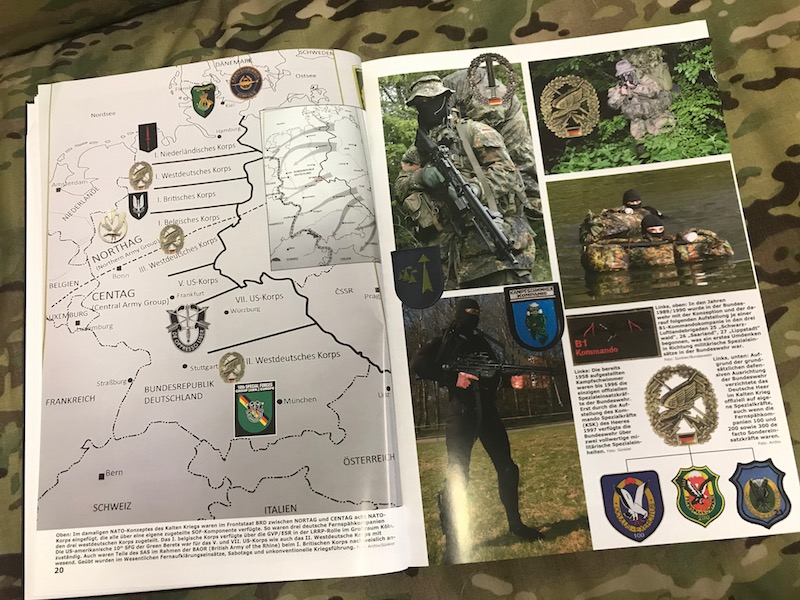 Spezialkräfte in der Bundesrepublik Deutschland, einst ein NATO Frontstaat hin zum Warschauer Pakt. Nach dem der Kommunismus verschwunden ist, hat die NATO-Osterweiterung zu sehr großen Herausforderungen geführt. Es mussten Sondereinsatzkräfte integriert und harmonisiert werden, die vorher unter ganz anderen Bedingungen ausgebildet und ausgerüstet wurden. Krim und der Ost-Ukraine-Konflikt haben dem Bündnis neue Gefahren gezeigt. Darüber hinaus wirft der Nordatlantikpakt einen unruhigen Blick auf das Baltikum, das sich durch seinen großen Nachbarn allemal bedroht fühlt, allerdings heute ein wichtiger Teil der NATO ist.
Spezialkräfte in der Bundesrepublik Deutschland, einst ein NATO Frontstaat hin zum Warschauer Pakt. Nach dem der Kommunismus verschwunden ist, hat die NATO-Osterweiterung zu sehr großen Herausforderungen geführt. Es mussten Sondereinsatzkräfte integriert und harmonisiert werden, die vorher unter ganz anderen Bedingungen ausgebildet und ausgerüstet wurden. Krim und der Ost-Ukraine-Konflikt haben dem Bündnis neue Gefahren gezeigt. Darüber hinaus wirft der Nordatlantikpakt einen unruhigen Blick auf das Baltikum, das sich durch seinen großen Nachbarn allemal bedroht fühlt, allerdings heute ein wichtiger Teil der NATO ist.
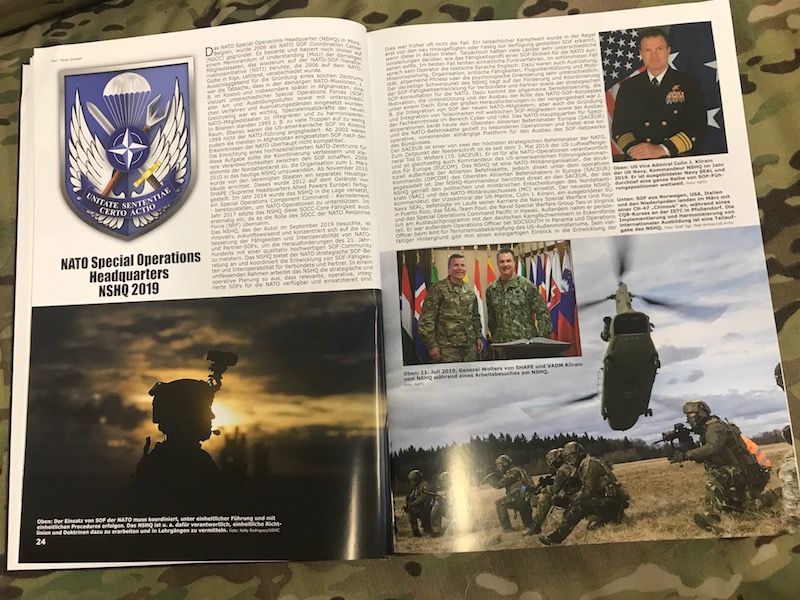 Das NATO Special Operations Headquarter bringt alle westlichen Spezialkräfte zusammen. Die Spezialeinsatzkräfte der NATO müssen der neuen, hybriden Kriegsführung begegnen können. Dazu kommt die Integration von weiblichen SOF-Troopern, UAV-Operators und Cyber-Spezialisten. Allerdings soll an dieser Stelle kein falscher Eindruck entstehen. Russland ist weiterhin ein wichtiger politischer Gesprächspartner auf allen Ebenen für Europa. HIER geht es zum NSHQ.
Das NATO Special Operations Headquarter bringt alle westlichen Spezialkräfte zusammen. Die Spezialeinsatzkräfte der NATO müssen der neuen, hybriden Kriegsführung begegnen können. Dazu kommt die Integration von weiblichen SOF-Troopern, UAV-Operators und Cyber-Spezialisten. Allerdings soll an dieser Stelle kein falscher Eindruck entstehen. Russland ist weiterhin ein wichtiger politischer Gesprächspartner auf allen Ebenen für Europa. HIER geht es zum NSHQ.
 Gemeinsam kämpfen kann man nur, wenn man gemeinsam lernt. Das NATO International Special Training Centre wird im dem Buch auch als ländervereinende Struktur vorgestellt. HIER geht es direkt zum ITSC.
Gemeinsam kämpfen kann man nur, wenn man gemeinsam lernt. Das NATO International Special Training Centre wird im dem Buch auch als ländervereinende Struktur vorgestellt. HIER geht es direkt zum ITSC.
 Was an dem Buch besonderen Spaß macht, sind nicht nur die vielen Bildern, sondern auch die vielen Abzeichen und Gliederungen, die den Einheitenaufbau verständlich machen.
Was an dem Buch besonderen Spaß macht, sind nicht nur die vielen Bildern, sondern auch die vielen Abzeichen und Gliederungen, die den Einheitenaufbau verständlich machen.
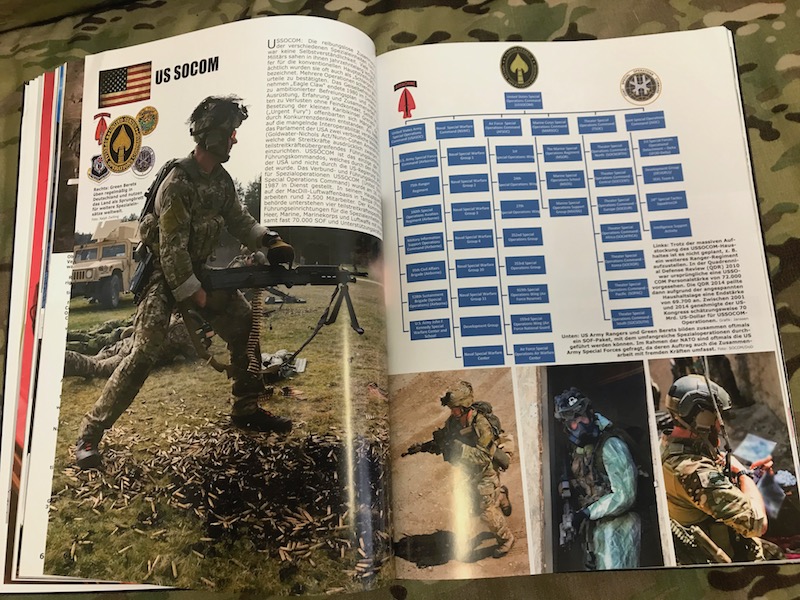 Mit dabei sind natürlich die US-Amerikaner, die mit USSOCOM eine eigenes Hauptquartier für ihre vielen Spezialkräfte haben. Was da alles dazu gehört, wird in dem Buch gut vorgestellt, von Special Forces bis zu Navy SEALs und ausgefalleneren Varianten. HIER findet ihr USSOCOM.
Mit dabei sind natürlich die US-Amerikaner, die mit USSOCOM eine eigenes Hauptquartier für ihre vielen Spezialkräfte haben. Was da alles dazu gehört, wird in dem Buch gut vorgestellt, von Special Forces bis zu Navy SEALs und ausgefalleneren Varianten. HIER findet ihr USSOCOM.
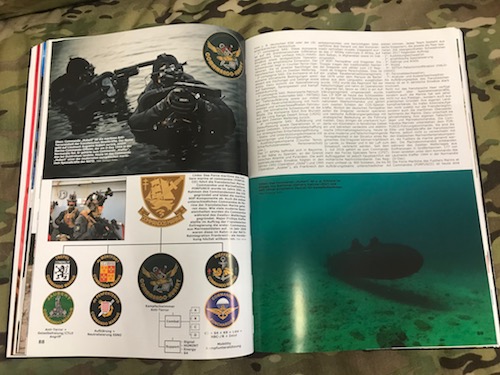 Aus der Luft, an Land und natürlich im Wasser sind Spezialkräfte zu finden. Hier das Commando Hubert der Franzosen, die auch für die Entstehung der deutschen Kampfschwimmer nach dem Zweiten Weltkrieg eine bedeutende Rollen gespielt haben.
Aus der Luft, an Land und natürlich im Wasser sind Spezialkräfte zu finden. Hier das Commando Hubert der Franzosen, die auch für die Entstehung der deutschen Kampfschwimmer nach dem Zweiten Weltkrieg eine bedeutende Rollen gespielt haben.
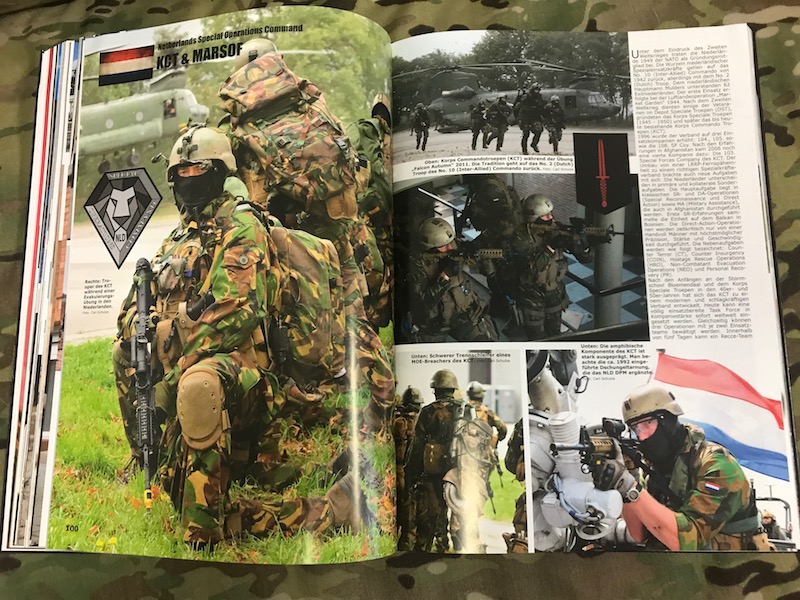 Fit im Feld sind KCT und MARSOF. Die Commandotroepen sind die Spezialkräfte der Niederländer und waren von Bosnien bis Afghanistan überall im Einsatz, wo es etwas zu tun gab. MARSOF ist nach den Vorbild des britischen Special Boat Squadron aufgebaut worden.
Fit im Feld sind KCT und MARSOF. Die Commandotroepen sind die Spezialkräfte der Niederländer und waren von Bosnien bis Afghanistan überall im Einsatz, wo es etwas zu tun gab. MARSOF ist nach den Vorbild des britischen Special Boat Squadron aufgebaut worden.
 Kann natürlich nicht fehlen: das Kommando Spezialkräfte (KSK) kommt vom Heer, das KSM ist das Kommando Spezialkräfte der Deutschen Marine.
Kann natürlich nicht fehlen: das Kommando Spezialkräfte (KSK) kommt vom Heer, das KSM ist das Kommando Spezialkräfte der Deutschen Marine.
 Die modernen Wikinger tragen auch Multicam und sind zum Beispiel bei NORSOCOM zu finden. Im Buch werden alle nordischen Staaten behandelt.
Die modernen Wikinger tragen auch Multicam und sind zum Beispiel bei NORSOCOM zu finden. Im Buch werden alle nordischen Staaten behandelt.
 Relativ neu um Westen sind die Spezialkräfte der Armeen ehemaliger Ostblockstaaten. Die GROM aus Polen hat sich besonders bewährt. In „NATO Special Forces“ werden auch die Spezialkräften aus den baltischen Staaten vorgestellt, hier die Litauer.
Relativ neu um Westen sind die Spezialkräfte der Armeen ehemaliger Ostblockstaaten. Die GROM aus Polen hat sich besonders bewährt. In „NATO Special Forces“ werden auch die Spezialkräften aus den baltischen Staaten vorgestellt, hier die Litauer.
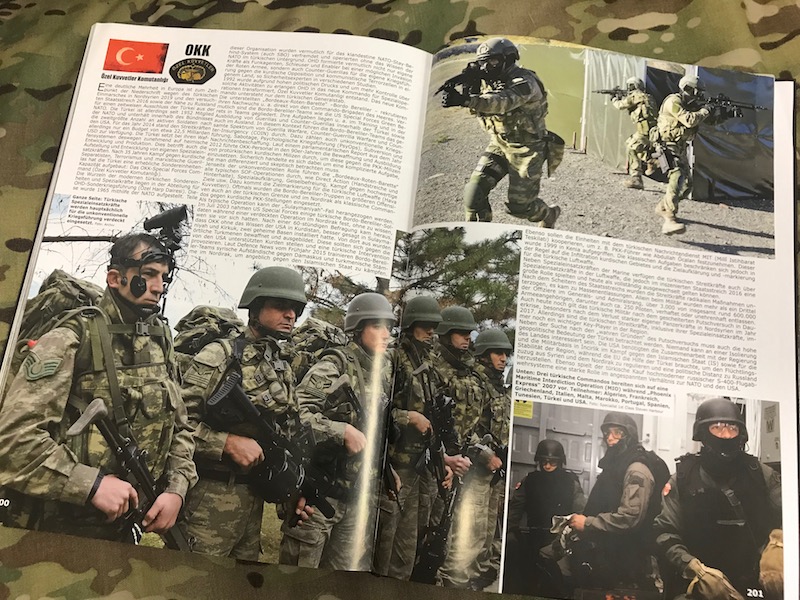 NATO Mitglieder und doch relativ unbekannt bei uns. Sören Sünkler Buch stellt auch die die Spezialkräfte der türkischen Armee vor.
NATO Mitglieder und doch relativ unbekannt bei uns. Sören Sünkler Buch stellt auch die die Spezialkräfte der türkischen Armee vor.
 Wer wissen will, was noch alles vorkommt im Buch: hier das Inhaltsverzeichnis.
Wer wissen will, was noch alles vorkommt im Buch: hier das Inhaltsverzeichnis.
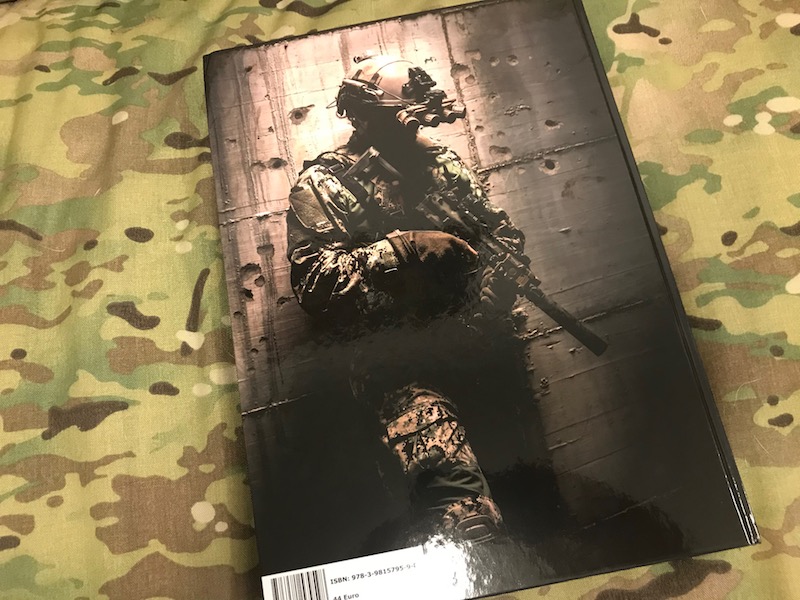 Vermutlich der schärfste Operator überhaupt: Max vom supranationalen DEVTSIX Verbund. Großartig ins Bild gesetzt von MILpictures.
Vermutlich der schärfste Operator überhaupt: Max vom supranationalen DEVTSIX Verbund. Großartig ins Bild gesetzt von MILpictures.
FAZIT: Spezialkräfte verändern sich permanent, das ist der aktuelle Überblick über die NATO. (Cool wäre es so ein Buch auch über russische Kräfte zu haben.) Vieleviele Bilder, informative Texte. Die Grafik hat eher keine Spezialkräfte, aber Bücher sind ja auch Gebrauchsgegenstände. Dieses hier macht viel Spaß. SPARTANAT Leseempfehlung.
„NATO Special Forces (heute) – 70 Jahre NATO“ von Sören Sünkler, 206 Seiten, S.-Ka. Verlag, Nürnberg 2019, Euro 44,–
SPARTANAT ist das Online-Magazin für Military News, Tactical Life, Gear & Reviews.
Schickt uns eure News: [email protected]
Werbung
Hol Dir den wöchentlichen SPARTANAT-Newsletter.
Dein Bonus: das gratis E-Book von SPARTANAT.


